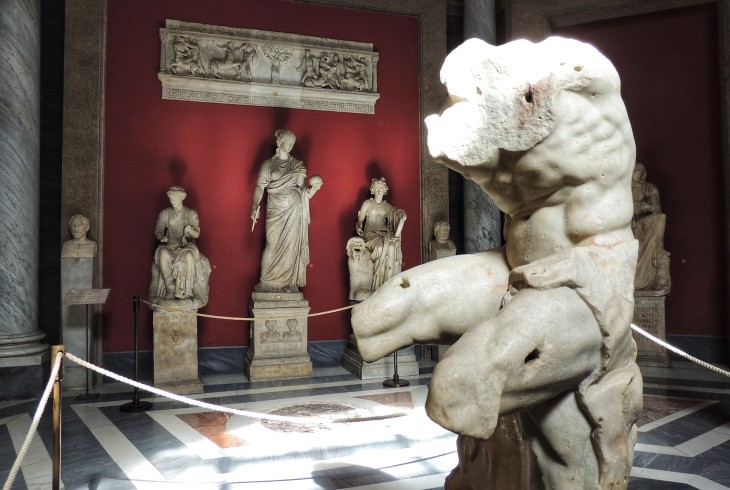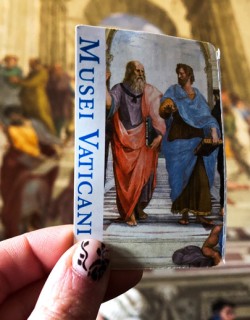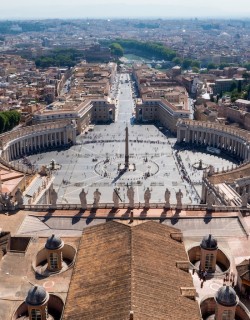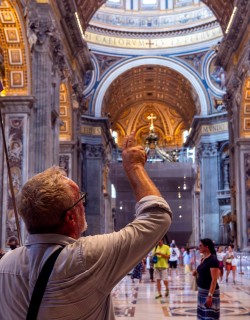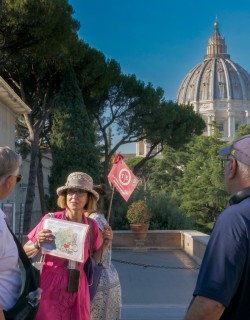Amongst the must-see sites in Rome, the fabulous Vatican Museums figure right at the top of the list. But with tens of thousands of treasures spread across nearly nine kilometers of galleries, no visitor — no matter how dedicated — can see it all in one trip. Elsewhere we’ve offered up our top tips for planning a visit to the Vatican Museums, but what are the key things that you need to see when you get here?
From Michelangelo’s awe-inspiring frescoes in the Sistine Chapel to the masterful Raphael Rooms, in this guide we’ve gathered together in one place the Vatican highlights that you simply can’t afford to miss. Think of these as starting points in your journey of discovery through the amazing Vatican Museums!
If you’re a return visitor to the Vatican and want some inspiration for some hidden gems to add to your itinerary, then check out our separate guide to the best-kept secrets in the Vatican Museums here.
1. The Sistine Chapel Ceiling
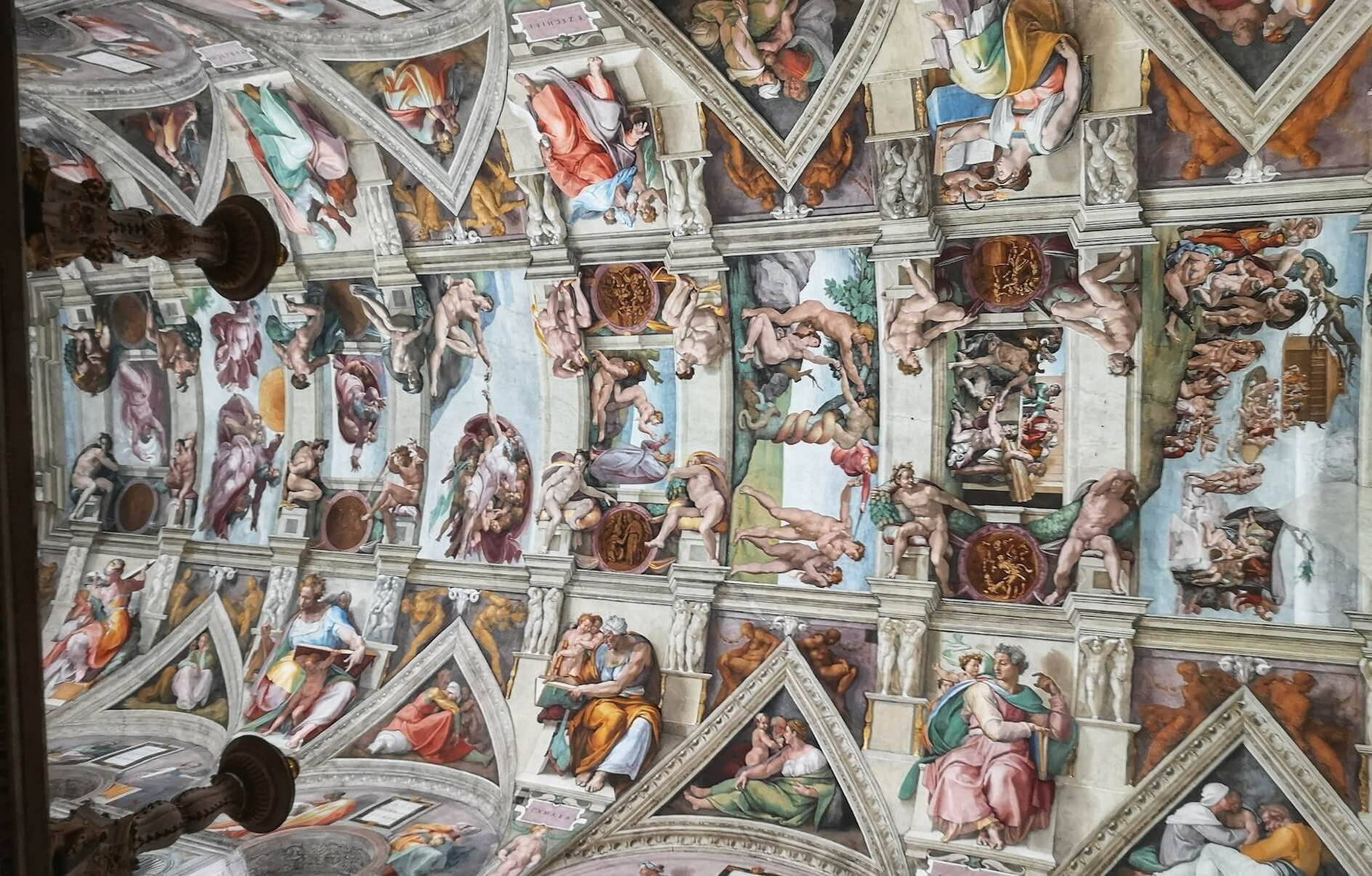
Why You Should Go: Witnessing first hand some of the most iconic artworks ever painted is a spine-tingling experience.
The absolute highlight of the Vatican Museums is the Sistine Chapel, where the awe-inspiring works of Michelangelo dominate every surface. But the chapel was actually built in the 1470s by Pope Sixtus IV when Michelangelo was just a young boy, designed to function as both the private papal chapel and an impregnable defensive fortress deep within the Vatican walls. Sixtus called upon the most renowned Florentine and Umbrian painters of the day (including Perugino and Botticelli) to decorate the chapel’s side walls with frescoes depicting the lives of Moses and Christ.
25 years later, Julius II decided to outdo his predecessor by having Michelangelo redecorate the ceiling of the Sistine Chapel, at this time covered with a depiction of the starry night sky. Michelangelo thought of himself as a sculptor rather than a painter and was reluctant to accept the commission, but what he came up with between 1508-1512 amazed his contemporaries and has continued to amaze viewers ever since. More than 300 enormous figures are portrayed across the vault in almost every pose imaginable.
Massive prophets, sibyls, and naked figures known as ignudi frame the ceiling, while nine frescoes running along the main space relate the Book of Genesis, from the Creation of the World to Noah’s Ark. At the very center of the scheme is the Creation of Adam, where a grey-bearded God sparks life into his beautiful human creation through the merest brush between their perfectly manicured fingertips.
For a complete in-depth guide to the Sistine Chapel, see our special dedicated guide to the frescoes.
2. The Raphael Rooms
Why You Should Go: Raphael’s marvellous frescoes, including the School of Athens, provide a unique insight into the culture of the High Renaissance.
Alongside Michelangelo and Leonardo da Vinci, Raphael was the third great artistic genius of Renaissance Italy. The preternaturally talented Raphael was already producing masterpieces in his early 20s, and his art was sought after across Italy. Gifted with easy charm and grace, Raphael was at ease in the refined court culture of the Vatican, and Julius II soon called on him to fresco his private apartments. The result was the stunning suite of rooms to this day known as the Raphael Rooms.
Raphael’s magnificently harmonious style is best captured in the The School of Athens, which adorns the wall of the Stanza della Segnatura. Here Plato and Aristotle debate fundamental questions of being in a grand classical hall, surrounded by various ancient philosophers who bear the faces of recognizable Renaissance figures. Leonardo da Vinci appears as Plato, the architect Bramante as Euclid, and Michelangelo as the saturnine and cryptic Heraclitus. Raphael himself appears in the scene, too - look for the poised young man in a green cap.
For a complete guide to the Raphael Rooms see our in-depth article: The Raphael Rooms in the Vatican.
3. Amazing Ancient Sculptures
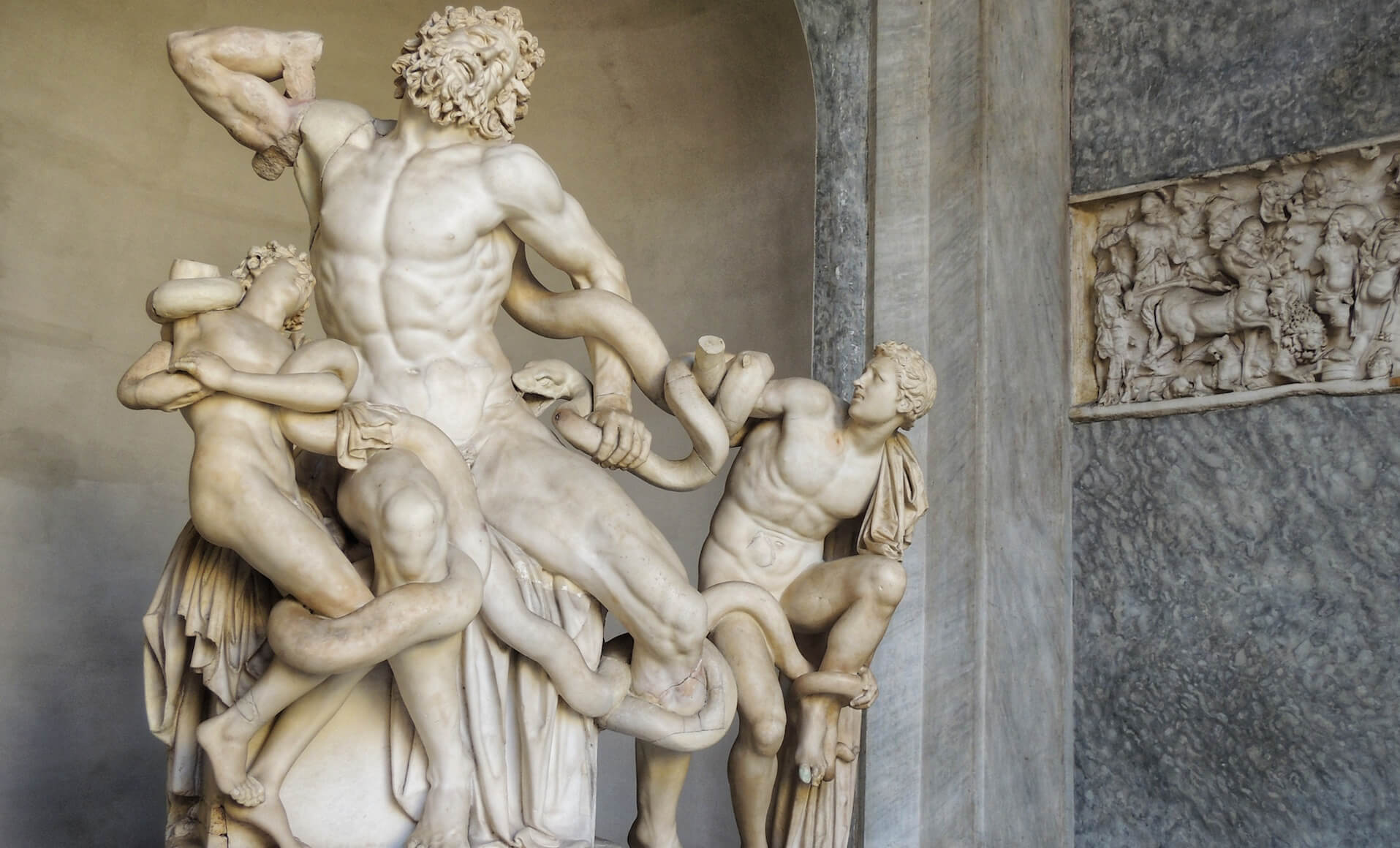
Why You Should Go: Some of the most important works of ancient sculpture have been on show here for over 500 years, inspiring generations of artists including Michelangelo and Raphael.
There’s much more to the Vatican than Christian art. Numerous Renaissance popes eagerly collected classical sculptures, and the ancient marbles filling its halls shaped ideals of naturalism and proportion during the Renaissance. The heart of this collection is the Octagonal Courtyard, a lovely sculpture garden founded by Julius II in the early 1500s. You’ll want to stop here to admire fabulous sculptures like the Laocoön, the Apollo Belvedere and the Belvedere Torso.
The Laocoön, a dramatic Hellenistic masterpiece praised by Pliny, depicts a Trojan priest and his sons battling divine sea-snakes. Unearthed in a vineyard in the 1500s, it was swiftly moved to the Vatican. Equally renowned is the nearby Apollo Belvedere, for centuries the most highly regarded artwork of antiquity, considered to epitomize classical ideals of bodily perfection. The Belvedere Torso, meanwhile, is a fragmented yet powerful male figure that deeply influenced Michelangelo. According to legend, Julius II asked him to restore it, but Michelangelo refused - for the great sculptor, the statue was already perfect.
Learn more about the ancient masterpieces in the Vatican here - 5 Must-See Ancient Masterpieces in the Vatican.
4. Michelangelo’s Last Judgement

Why You Should Go: This whirling tangle of bodies changed the story of art
30 years after completing the ceiling, Michelangelo returned to the Sistine Chapel one final time to take on another herculean task. Between 1536 and 1541, Pope Paul III convinced the aging artist to decorate the massive altar wall of the chapel with a fresco depicting the terrifying final moments of life on earth according to Christian teaching - The Last Judgement.
A grave Christ reigns on high as he dispenses judgement upon the living and the dead, surrounded by the saints of the church. The saved are carried towards heaven by angels, whilst the damned are dragged screaming down to hell. The horror inscribed into the features of one figure who covers his face as he is pulled downwards is genuinely terrifying.
The work wasn’t universally praised - many considered the painting’s nudity unbecoming, and the work came within a whisker of being destroyed entirely . Thankfully the censors contented themselves with adding loincloths to the offending genitals. Despite the controversy, the unique twisting and muscular style Michelangelo pioneered in the Last Judgement would have a seismic impact on artists for generations to come.
5. The Vatican Pinacoteca (Picture Gallery)
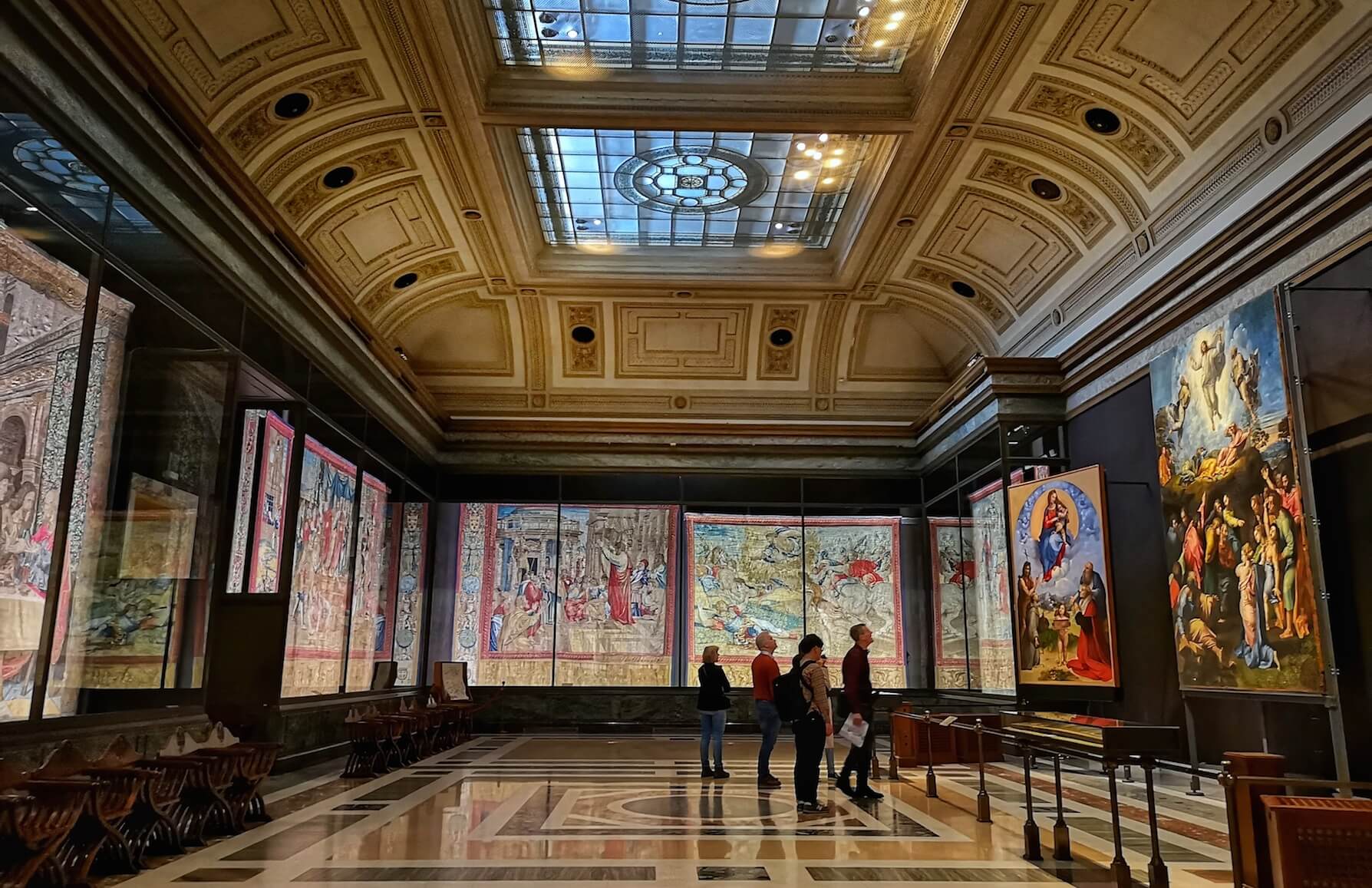
Why You Should Visit: A whirlwind journey through the art of the Renaissance and beyond, including Raphael’s last masterpiece and the only work by Leonardo in Rome.
The Vatican Museums’ Pinacoteca, or Picture Gallery, is one of the best collections of Renaissance and Baroque painting anywhere - but many visitors pass by without even realising it’s there. Don’t make their mistake! Starting at the dawn of the Renaissance, admire Giotto’s Stefaneschi altarpiece that once adorned the altar of Old St. Peter’s Basilica, before pausing in front of four absolute masterpieces by Raphael, including the dramatic Transfiguration of Christ - his last and perhaps greatest work.
Also here are the tapestries designed by Raphael for the Sistine Chapel depicting the Acts of the Apostles, which hung there for only a few years before being stolen during the brutal sack of Rome in 1527. Look out too for a ghostly unfinished painting by Leonardo da Vinci representing St. Jerome in the Wilderness, lost for centuries and rediscovered in the 19th century when it was being used as a workbench by a Roman cobbler.
But maybe the highlight of the collection is the Baroque master Caravaggio’s incredible, brooding take on the Deposition of Christ from the Cross, a drama of darkness and light that seems to reflect the painter’s troubled soul in the lead-up to the event that would change the course of his life – the murder of Ranuccio Tomassoni.
To find the Pinacoteca, look out for a door to your right at the top of the escalator you have to take just after entering the Museums. Discover the highlights of the Pinacoteca with our guide.
6. The Borgia Apartments
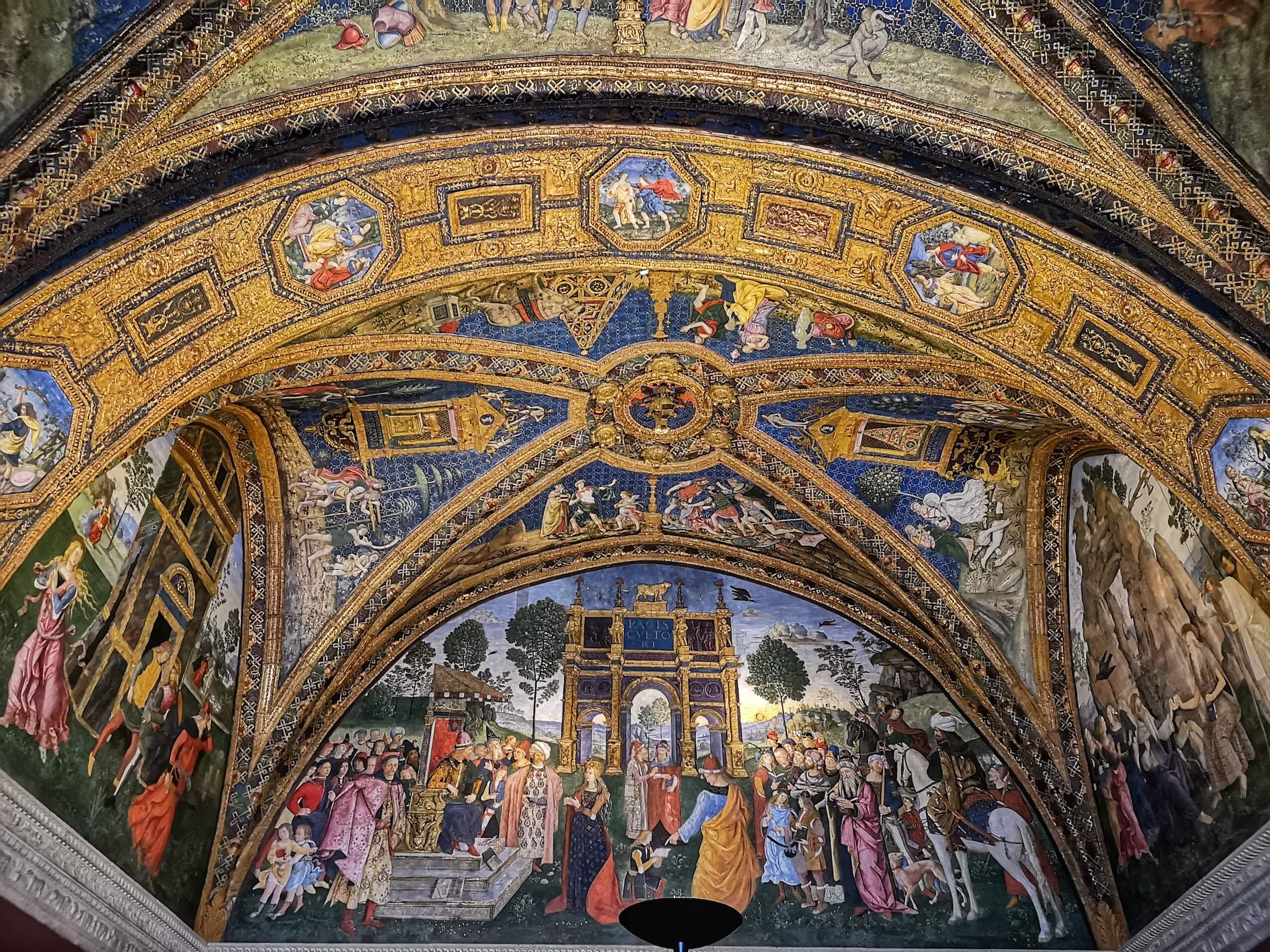
Why You Should Go: Pinturicchio’s vibrant frescoes vividly demonstrate the courtly charm of the Renaissance in rooms rich with the dark history of the Borgias.
The Raphael rooms weren’t the only apartments in the Vatican to receive the full-on Renaissance treatment. A decade earlier, the renowned Umbrian master Pinturicchio painted a series of frescoes along the walls of the suite of rooms in which Julius’ hated predecessor, the notorious Spanish pope Rodrigo Borgia (Alexander VI) lived during his reign between 1492 and 1503.
Pinturicchio had impressed as a young painter during the first campaign of decorations in the Sistine Chapel in the 1480s, and by the time Borgia called him to his side a decade later he was one of Italy’s most sought-after artists. Pagan and Christian themes mix freely in his dazzling frescoes, with inspirations deriving from ancient Roman, Egyptian and Jewish art and culture. The distinctive ‘grotesque’ (grotteschi) pattern of decoration on the lower walls was inspired by the ancient Roman decorations in Nero’s rediscovered Golden House, where Pinturicchio himself undertook dangerous night-time expeditions.
If you were hooked by the intrigue and plotting in the Showtime TV series The Borgias, this is your chance to come face-to-face with the real protagonists. Rodrigo features regularly in the decorations, as does the Pope’s famously hedonistic and beautiful daughter Lucrezia. Her notorious brother Cesare is here too, alongside Giulia Farnese, Rodrigo’s mistress.
The Borgia Apartments come just after the Raphael Rooms on the Museum itinerary, so make sure to pause here to compare the two Papal suites. Get the full story of the Borgia apartments here.
7. The Gallery of Maps
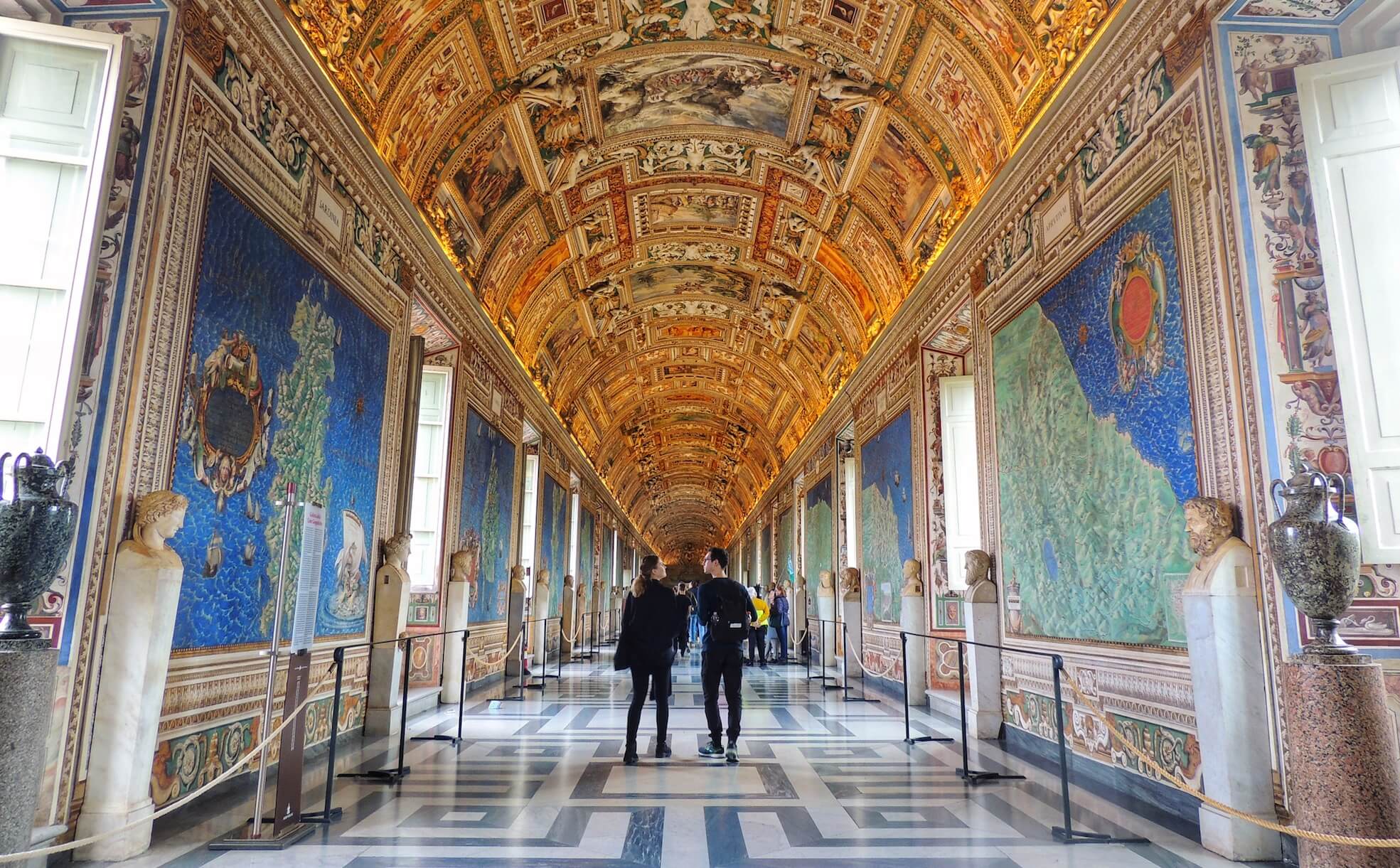
Why You Should Go: You’ll wish Google Maps looked like this after you see the incredible achievements of these Renaissance mapmakers.
The 120 metre long Hall of Maps was built in 1578 on the orders of Pope Gregory XIII, and the enormous maps lining each side of the gallery immortalise Italy as it was in the 16th-century. The Pope wanted a visual record of his vast estates, and hired a crack team of painters to realise his vision, overseen by the expertise of Italy’s most renowned geographers and mathematicians - chief amongst them cosmographer Ignazio Danti. The resulting marriage of art and science is breathtaking. Each map documents a different region of the Italian peninsula, painted with incredible topographic detail.
From soaring mountains to rushing rivers and thick forests, the peninsula is brought to life in vibrant colours. Perhaps the real highlights are the cities: Venice glitters in its lagoon, Florence is recognisable from its unique Renaissance architecture, and the skyline of Rome is dominated by the unmistakable forms of the Colosseum and St. Peter’s basilica. Each side wall of the hall represents one of Italy’s two coasts – as you walk down the centre, it’s as if you are travelling through Italy on the peaks of the Apennine mountain range that runs like a spine down its centre. Following the itinerary along the walls, the Pope could wander through his empire without ever leaving the comfort of his palace.
The maps are even enlivened by historical scenes that took place in these regions. Make sure to look out for Julius Caesar crossing the Rubicon and Christopher Columbus flying down the coast of Liguria towards America in a chariot guided by Neptune and pulled by sea-horses.
8. The Tapestry Gallery
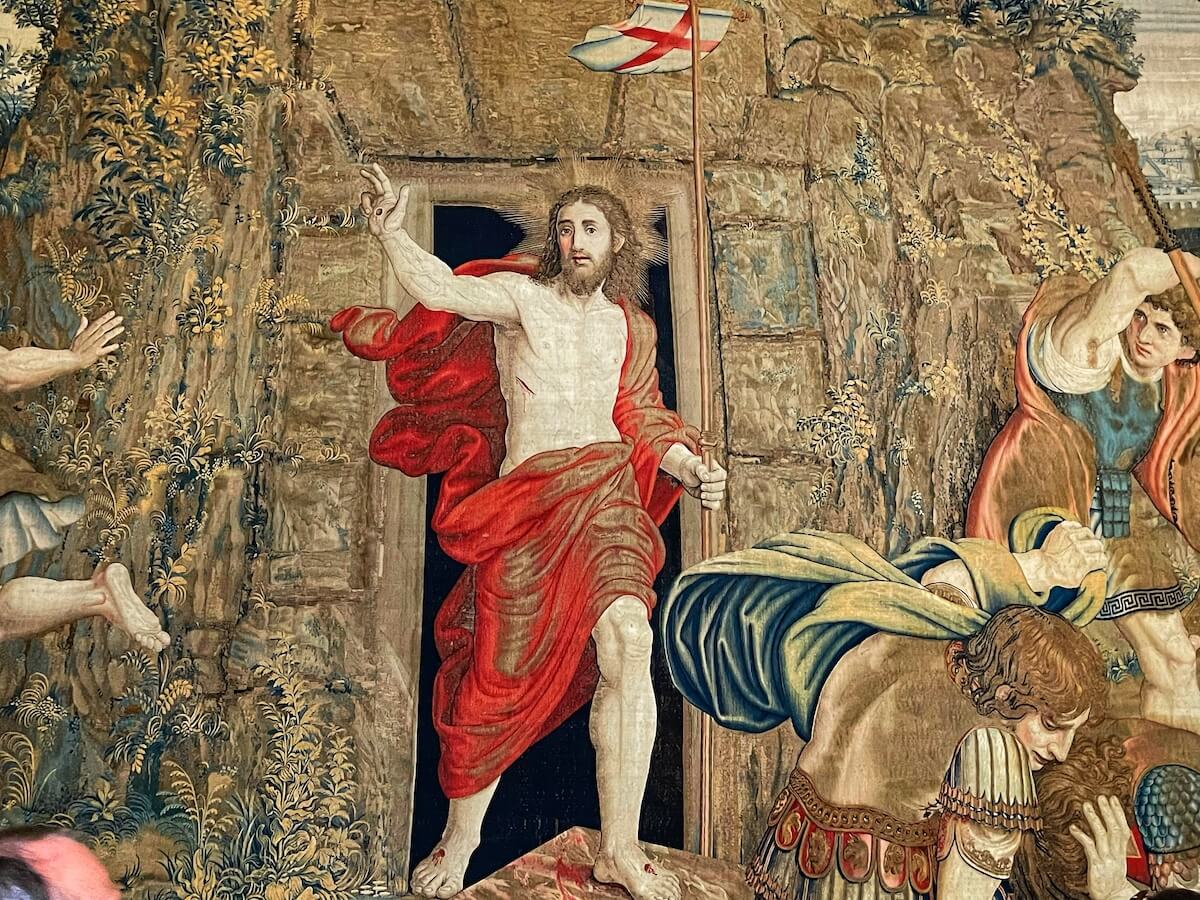
Why You Should Go: Discover a largely forgotten side of Renaissance art practice, and witness an amazing example of moving perspective
As you make your way from the ancient sculpture galleries and towards the Hall of Maps, stop off in the Tapestry Gallery. Tapestries were highly prized during the Renaissance both for the eye-watering expense of their materials and the massive amount of skilled labour that went into their production. The massive tapestries woven by a crack team of Belgian craftsmen to the designs of Raphael for the Sistine Chapel were amongst the most revered and expensive works produced in the Italian Renaissance, and you can still see them in the Vatican’s Pinacoteca.
They caused such a buzz that pope Clement VII decided to commission another series of tapestries from the Brussels workshop of Pieter van Aelst, depicting scenes from Christ’s youth and the dramatic events of his Resurrection. The depth of emotion picked out in the threads of wool, silk and precious metals is incredible. Most spectacular of all is the massive tapestry portraying Christ’s Resurrection. Christ stands proudly confident in the centre of the tapestry atop the broken slab that had once closed his tomb, as soldiers and bystanders scatter in panic. Keep your eyes fixed on those of Christ as you walk past; in a miracle of illusionism, his gaze follows you as you make your way down the gallery.
9. The Spiral Staircase
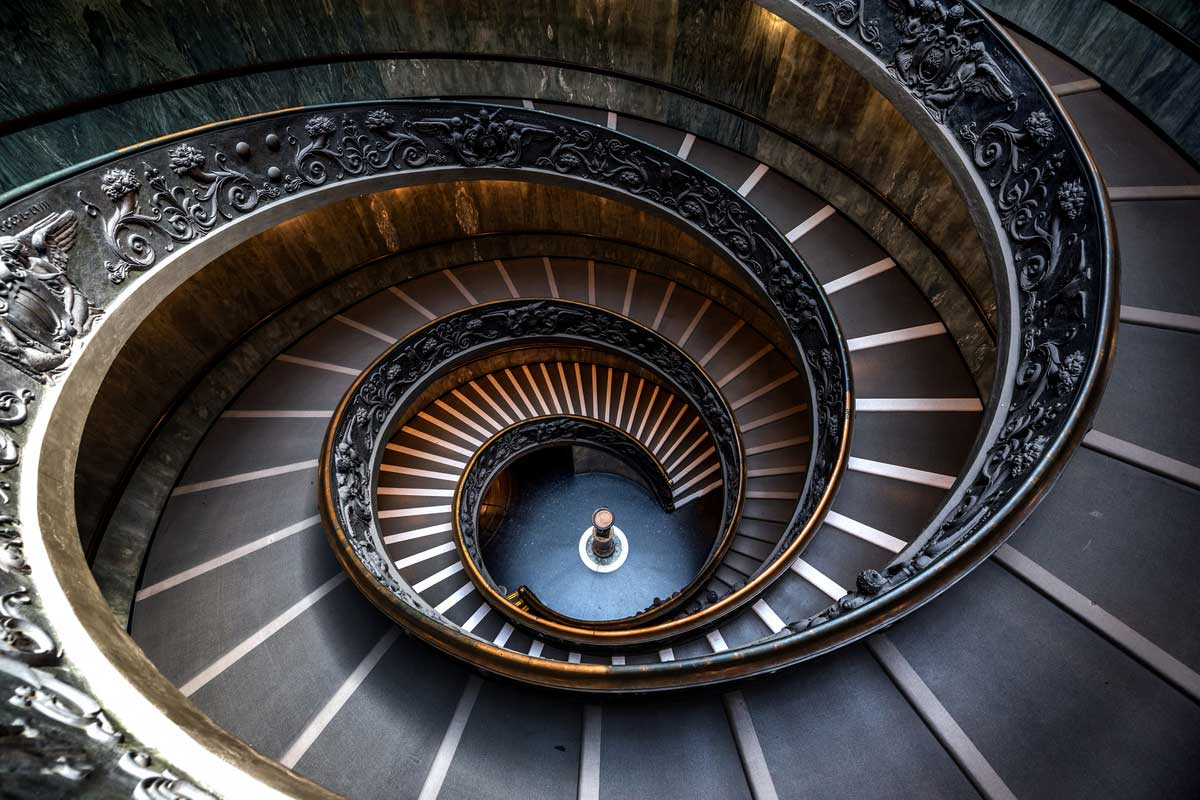
Why You Should Go: Giuseppe Momo’s double-helix stairwell is an engineering marvel
If anything sums up the special nature of the Vatican Museums, it’s the fact that even the exit ramp is a spectacular work of art in its own right. The magnificent spiral staircase was designed by Giuseppe Momo in 1932, inspired by a famous staircase built by Donato Bramante in 1505 linking the Belvedere Palace to the outside world (unfortunately the Bramante staircase is not usually open to the public). The modern staircase is in the shape of a double helix, like human DNA, and enables people to ascend and descend simultaneously without ever crossing paths. Its beautiful spiral shape and fabulous art-deco metalwork details makes it the last must-see highlight in the museums.
10. The Pinecone Courtyard

Why You Should Go: This beautiful space once formed the centerpiece of Donato Bramante's famous Belvedere Courtyard
The enormous bronze pinecone that gives its name to the Pinecone Courtyard was probably originally cast as the centrepiece of a fountain in the centre of the ancient city, possibly part of a temple to the Egyptian god Isis, and dates from the second century AD. It was found in the Campo Marzio in the Middle Ages and for centuries was positioned in the atrium of Old St. Peter’s basilica.
It was moved to the Vatican in 1608, where it adorned Donato Bramante’s famous Belvedere Courtyard (the current Pinecone courtyard is only about half of Bramante’s original design). The beautiful bronze peacocks that accompany the Pinecone are now reproductions, but you can still see the originals in the Braccio Nuovo wing of the Museums nearby. For the ancient Romans peacocks were a symbol of immortality, and these bronze birds were originally cast for the tomb of the emperor Hadrian (today Castel Sant’Angelo), before being moved to old St. Peter’s to keep the Pinecone company.
Check out the modernist masterpiece by the hand of Italian sculptor Arnaldo Pomodoro that faces the ancient pinecone from the centre of the courtyard. A rotating bronze globe, the iconic Sphere Within Sphere and has sister works across the globe – from United Nations headquarters in New York to Trinity College, Dublin.
Through Eternity Tours offer a range of guided tours of St. Peter’s and the Vatican museums – join us and experience their splendor in company of our friendly expert guides!
MORE GREAT CONTENT FROM THE BLOG:
- How to Visit the Vatican in 2025
- The Best Vatican Tours to Take in 2025
- What to Do Near the Vatican Museums
- A Pilgrim and Tourists Guide to Jubilee 2025
- How to Climb the Dome of St. Peter's Basilica
- 7 Things You Need to See in St. Peter's Basilica
- Art and Faith in the Vatican: The History of St. Peter's Basilica
- Hidden Masterpieces of the Vatican Museums
